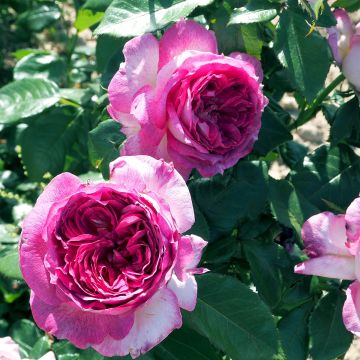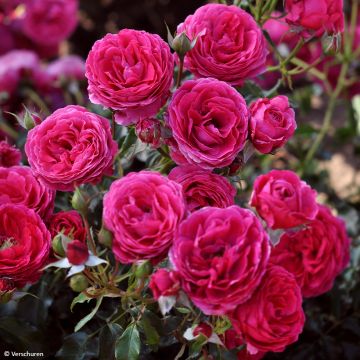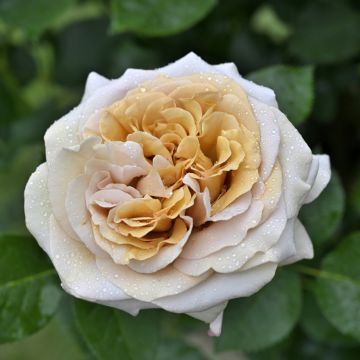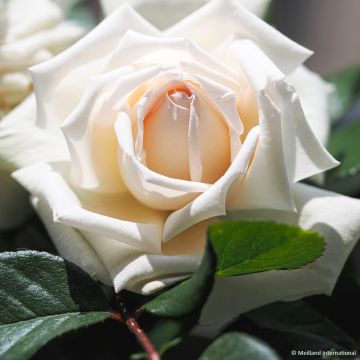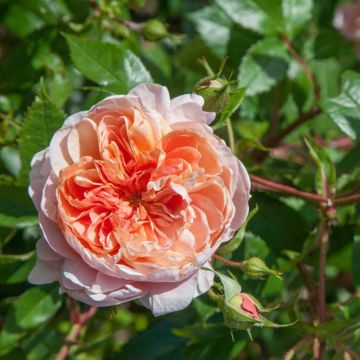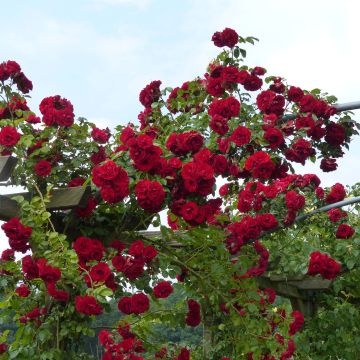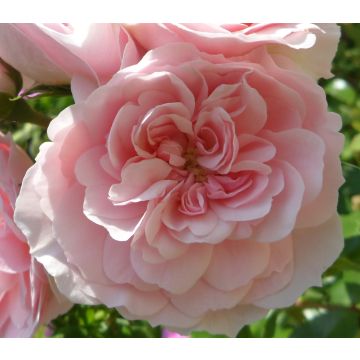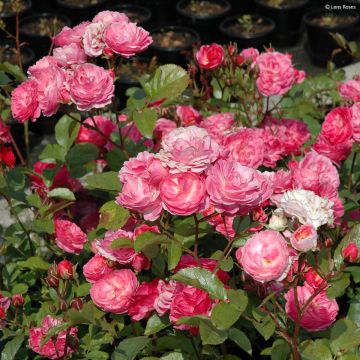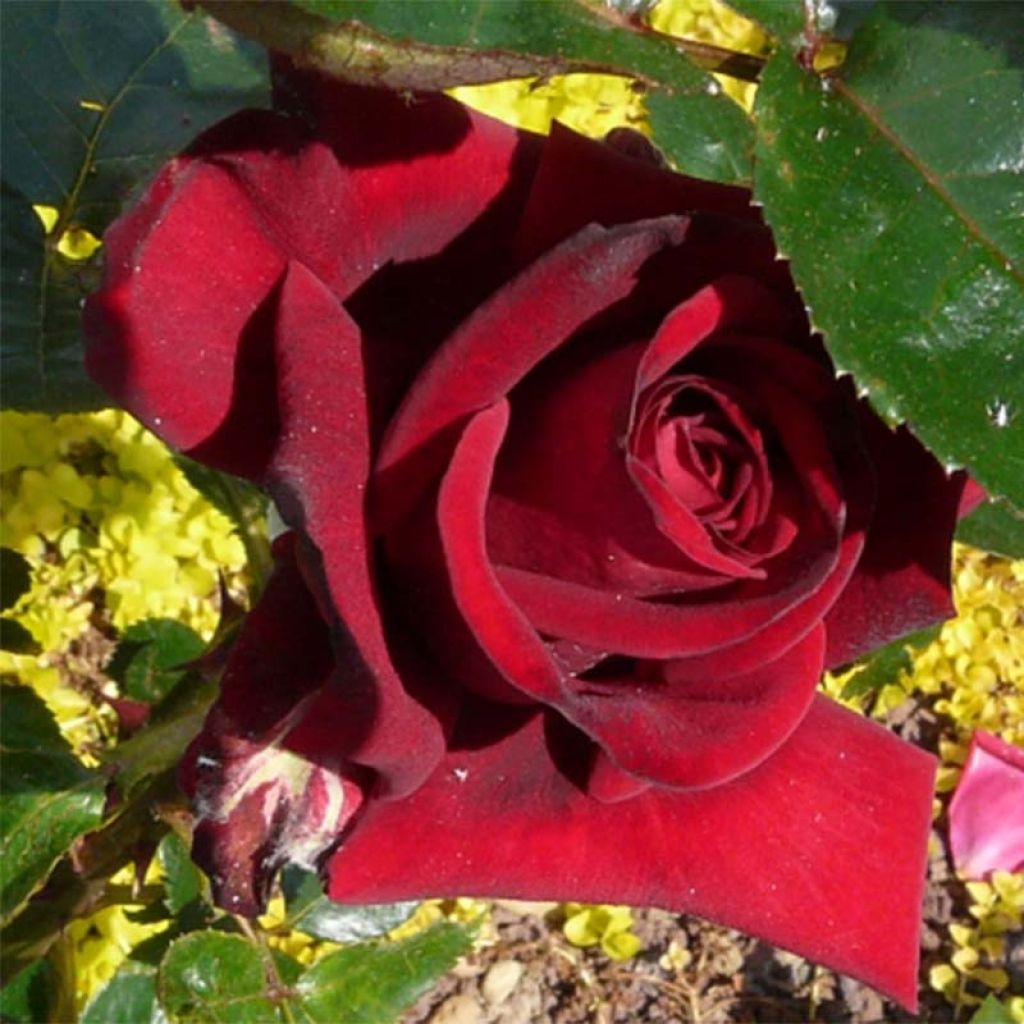

Rosa Rouge Adam
Rosa Rouge Adam
Rosa Rouge Adam® 'Adahuin'
Rosa 'Adahuin'
Why not try an alternative variety in stock?
View all →This plant carries a 24 months recovery warranty
More information
We guarantee the quality of our plants for a full growing cycle, and will replace at our expense any plant that fails to recover under normal climatic and planting conditions.
From €5.90 for pickup delivery and €6.90 for home delivery
Express home delivery from €8.90.
From €5.90 for pickup delivery and €6.90 for home delivery
Express home delivery from €8.90.
Delivery to Corse prohibited: UE law prohibits the import of this plant from mainland France to Corse as part of the fight against Xylella fastidiosa. Please accept our sincere apologies.
More information
Does this plant fit my garden?
Set up your Plantfit profile →
Description
Rosa Rouge Adam is a modern hybrid tea with a classic design that is close to perfection. This generous rose never ceases to charm with its perfectly curved turbinate flowers, wrapped in velvet red petals sculpted by dark black reflections. Its dark green and shiny foliage is immune to diseases. This compact, repeat-flowering, robust bush can be used isolated or grouped in beds, or as a border plant. It beautiful flowers are perfect in bouquets.
Rosa Rouge Adam 'Adahuin' is a modern bush rose with large single flowers obtained by Michel Adam. This excellent variety obtained the title of "Grand Rose of the Century" in Lyon in 1996. This dense shrub with a bushy and upright habit, reaches about 80m (26ft) in height and 50cm (20in) in width at maturity. It has a rapid growth rate. It produces strong, thorny and well-branched stems, which bear foliage that is thick, sturdy, and elegant. The leaves are bronze at bud break, then a glossy dark green. The foliage is highly resistant to diseases. From May to October, the plant produces waves of large flowers with a diameter of 13 to 14cm (5 to 6in), with a typical turbinate shape of tea hybrid roses. They are composed of 77 to 85 petals of a perfectly uniform cardinal red colour, with a velvety appearance. They open to a tightly packed heart populated with almost black reflections. They are carried singly at the end of long shoots from the current year or by those that emerge from 2-year-old stems. The flowers will continue to bloom if faded roses are regularly removed. In this variety, there is no fragrance.
Rosa Rouge Adam has a place in all flower gardens. Its magnificent flowers will enhance the decor of any bed, even the most modest. Roses of such red truly radiate in sunny regions, especially in semi-shade and against the light. With its sumptuous flowers and beautiful floribundance, Rosa Rouge Adam will go well in a large rose bed or as a standalone plant in a well-maintained small garden. It adapts to all soils that are not too dry and all climates, tolerating both rain and heat. It pairs perfectly with pale-pink roses like Prince Jardinier, or white roses like Fée des Neiges, and pretty easy-to-grow perennials like daylilies, royal lilies, perennial geraniums, or campanulas.
Report an error about the product description
Rosa Rouge Adam in pictures
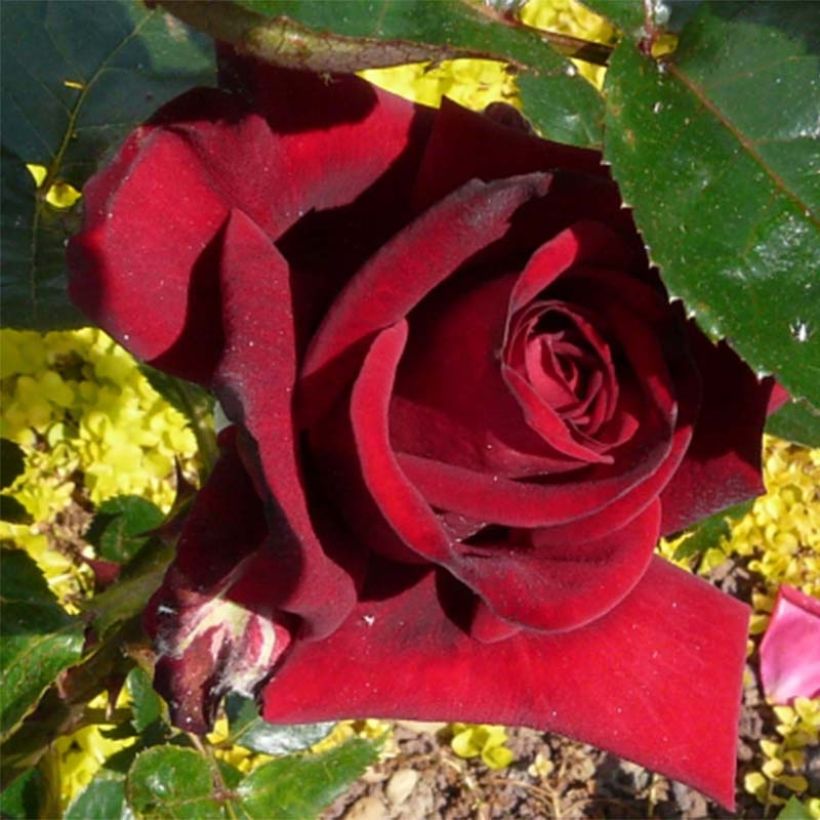

Plant habit
Flowering
Foliage
Botanical data
Rosa
Rouge Adam® 'Adahuin'
Rosaceae
Rosa 'Adahuin'
Cultivar or hybrid
Rosa multiflora (4L/5L pot, Wrapped bare root)
Other Large-flower tea Roses
Planting and care
Plant in a sunny or partially shaded location. Modern roses are tolerant, but do not like excessive limestone. They will adapt to any garden as long as the soil is well worked, not too heavy, and sufficiently rich. To plant your rose, work the soil by crumbling it and add fertiliser to the bottom of the planting hole (dried blood or dehydrated horn, for example). Water generously after planting to remove any air pockets. Water regularly for a few weeks to facilitate root growth.
Roses are often stained or unsightly at the end of summer, but this will not hinder their development. These spots are a natural phenomenon and will not harm the rose.
Planting period
Intended location
Care
-
, onOrder confirmed
Reply from on Promesse de fleurs
Roses by purpose
Haven't found what you were looking for?
Hardiness is the lowest winter temperature a plant can endure without suffering serious damage or even dying. However, hardiness is affected by location (a sheltered area, such as a patio), protection (winter cover) and soil type (hardiness is improved by well-drained soil).

Photo Sharing Terms & Conditions
In order to encourage gardeners to interact and share their experiences, Promesse de fleurs offers various media enabling content to be uploaded onto its Site - in particular via the ‘Photo sharing’ module.
The User agrees to refrain from:
- Posting any content that is illegal, prejudicial, insulting, racist, inciteful to hatred, revisionist, contrary to public decency, that infringes on privacy or on the privacy rights of third parties, in particular the publicity rights of persons and goods, intellectual property rights, or the right to privacy.
- Submitting content on behalf of a third party;
- Impersonate the identity of a third party and/or publish any personal information about a third party;
In general, the User undertakes to refrain from any unethical behaviour.
All Content (in particular text, comments, files, images, photos, videos, creative works, etc.), which may be subject to property or intellectual property rights, image or other private rights, shall remain the property of the User, subject to the limited rights granted by the terms of the licence granted by Promesse de fleurs as stated below. Users are at liberty to publish or not to publish such Content on the Site, notably via the ‘Photo Sharing’ facility, and accept that this Content shall be made public and freely accessible, notably on the Internet.
Users further acknowledge, undertake to have ,and guarantee that they hold all necessary rights and permissions to publish such material on the Site, in particular with regard to the legislation in force pertaining to any privacy, property, intellectual property, image, or contractual rights, or rights of any other nature. By publishing such Content on the Site, Users acknowledge accepting full liability as publishers of the Content within the meaning of the law, and grant Promesse de fleurs, free of charge, an inclusive, worldwide licence for the said Content for the entire duration of its publication, including all reproduction, representation, up/downloading, displaying, performing, transmission, and storage rights.
Users also grant permission for their name to be linked to the Content and accept that this link may not always be made available.
By engaging in posting material, Users consent to their Content becoming automatically accessible on the Internet, in particular on other sites and/or blogs and/or web pages of the Promesse de fleurs site, including in particular social pages and the Promesse de fleurs catalogue.
Users may secure the removal of entrusted content free of charge by issuing a simple request via our contact form.
The flowering period indicated on our website applies to countries and regions located in USDA zone 8 (France, the United Kingdom, Ireland, the Netherlands, etc.)
It will vary according to where you live:
- In zones 9 to 10 (Italy, Spain, Greece, etc.), flowering will occur about 2 to 4 weeks earlier.
- In zones 6 to 7 (Germany, Poland, Slovenia, and lower mountainous regions), flowering will be delayed by 2 to 3 weeks.
- In zone 5 (Central Europe, Scandinavia), blooming will be delayed by 3 to 5 weeks.
In temperate climates, pruning of spring-flowering shrubs (forsythia, spireas, etc.) should be done just after flowering.
Pruning of summer-flowering shrubs (Indian Lilac, Perovskia, etc.) can be done in winter or spring.
In cold regions as well as with frost-sensitive plants, avoid pruning too early when severe frosts may still occur.
The planting period indicated on our website applies to countries and regions located in USDA zone 8 (France, United Kingdom, Ireland, Netherlands).
It will vary according to where you live:
- In Mediterranean zones (Marseille, Madrid, Milan, etc.), autumn and winter are the best planting periods.
- In continental zones (Strasbourg, Munich, Vienna, etc.), delay planting by 2 to 3 weeks in spring and bring it forward by 2 to 4 weeks in autumn.
- In mountainous regions (the Alps, Pyrenees, Carpathians, etc.), it is best to plant in late spring (May-June) or late summer (August-September).
The harvesting period indicated on our website applies to countries and regions in USDA zone 8 (France, England, Ireland, the Netherlands).
In colder areas (Scandinavia, Poland, Austria...) fruit and vegetable harvests are likely to be delayed by 3-4 weeks.
In warmer areas (Italy, Spain, Greece, etc.), harvesting will probably take place earlier, depending on weather conditions.
The sowing periods indicated on our website apply to countries and regions within USDA Zone 8 (France, UK, Ireland, Netherlands).
In colder areas (Scandinavia, Poland, Austria...), delay any outdoor sowing by 3-4 weeks, or sow under glass.
In warmer climes (Italy, Spain, Greece, etc.), bring outdoor sowing forward by a few weeks.

















































